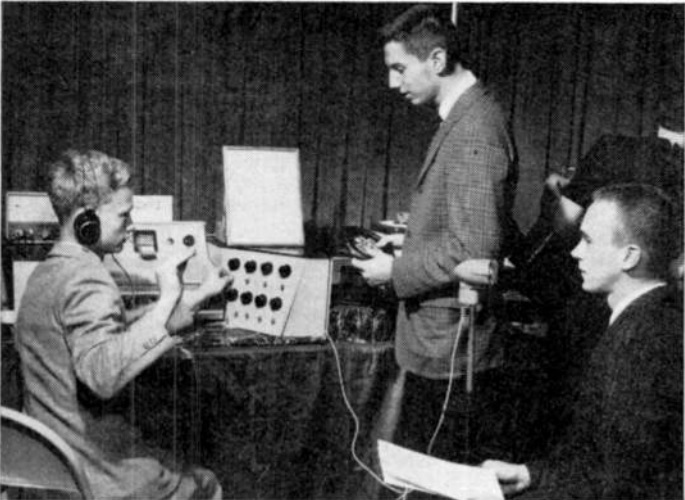 Shown here, in the September 1963 issue of Popular Electronics, is Albert Pabin (I believe with the headphones) and two other students demonstrating an audio console by using it during an actual broadcast. Pabin was a ninth-grade student at Utica Free Academy, Utica, NY. His science project was the console he designed and built, and he wanted to demonstrate it under actual broadcast conditions.
Shown here, in the September 1963 issue of Popular Electronics, is Albert Pabin (I believe with the headphones) and two other students demonstrating an audio console by using it during an actual broadcast. Pabin was a ninth-grade student at Utica Free Academy, Utica, NY. His science project was the console he designed and built, and he wanted to demonstrate it under actual broadcast conditions.
To do so legally, he procured an experimental license from the FCC, and was able to go on the air, on 27 MHz, with the call KF2XGJ. According to the magazine, the FCC rules made provision for student experimental licenses for students, seventh grade and above, who had “a good idea of what he is trying to show, and that he have older and more knowledgeable persons available to help him in case of difficulty.” In particular, “the FCC believes that a student’s instructors are fair judges of his motives and sincerity, and looks favorably on projects endorsed by an instructor.” Notice to the FCC Engineer-In-Charge for the district was also required.
The application required various technical descriptions of the transmitter, as well as a statement from the principal or faculty member, on school letterhead, stating that the project had he approval of the school. The magazine noted that the frequencies generally available were 27.23-27.28 MHz., 460-461 MHz, 462.525-467.475 MHz, and 2450-2500 MHz. Power was often (but not always) limited to 5 watts.
While experimental licenses are still provided for in Part 5 of the FCC Rules, there is no specific provision today for student experimental licenses.
